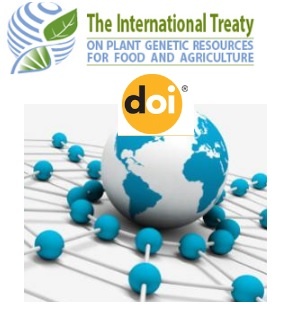19 July : Free Webinar : Assigning Digital Object Identifiers (DOIs) to Plant Genetic Resources


(PEXELS under Creative Commons Zero - CC0)
Dear AIMS Users and Visitors!
We are pleased to invite you to attend our upcoming webinar [as part of the Webinars@AIMS] :
TOPIC:
Assigning Digital Object Identifiers (DOIs) to Plant Genetic Resources
DATE: | Wednesday, 19 July, 2017 |
TIME: | 11.00 a.m. Rome Time (CEST Conversion to other Timezones) |
TARGET AUDIENCE: | The webinar is open to All |
To PARTICIPATE: | |
Once registered, you will receive an email confirming your registration for the Webinar, along with login instructions. | |
| We welcome questions and suggestions at: [email protected] |
PRESENTER: | Marco Marsella, Senior Advisor Global Information System of the International Treaty on Plant Genetic Resources for Food and Agriculture at FAO of the UN |
Digital Object Identifiers (DOIs)
"Digital Object Identifiers (DOIs) are persistent identifiers that are used to uniquely identify an object (which itself may be physical or digital) in the digital environment. Although other persistent identifiers are available, DataCite chose to work with DOIs as they have a number of features ... DOIs are: • Already well-established as identifiers for research publications • Recognised as an ISO standard 26324:2012 • Centrally managed and governed by the International DOI Foundation (IDF)", - Working with the British Library and DataCite.
CONTEXT. ABOUT THIS WEBINAR
The International Treaty on Plant Genetic Resources for Food and Agriculture (ITPGRFA) calls for the contribution of non confidential information about the Plant Genetic Resources for Food and Agriculture (PGRFA) to the Global Information System (GLIS) to facilitate access to such information by any party interested. The foundation of GLIS is the accurate identification of the PGRFA to which the information is associated. After extensive research and consultation, DOIs have been selected as the Permanent Unique Identifier of choice for GLIS.
The webinar describes the challenges that the GLIS team of the ITPGRFA has faced as well as the benefits that the GLIS user community will receive by the adoption of DOIs.
KEY TAKEAWAYS
After the webinar, attendees will have received an overview of the ITPGRFA and GLIS. They will have a better understanding of the process of applying DOIs to a physical object such as a PGRFA and they will have seen how the adoption of a Permanent Unique Identifier promotes the exchange of information among researchers.
ABOUT SPEAKER
| Marco Marsella is Senior Advisor for Global Information System of the International Treaty on Plant Genetic Resources for Food and Agriculture at FAO where he contributes to the design of the system and the promotion of DOIs in the Plant Genetic Resources community. His background is on Information Technology and he’s particularly interested in system integration and communication formats and protocols. Marco Marsella is also a member of the DataCite Board. |
We look forward to your participation in this webinar soon !
Related content:
- Why do we need Permanent Unique Identifiers?
- The recording of an Australian National Data Service (ANDS) webinar on DOIs to support citation of grey literature
- Identifiers for the 21st century: How to design, provision, and reuse persistent identifiers to maximize utility and impact of life science data
Some use cases with DOI
|


